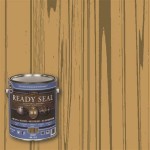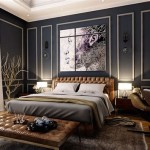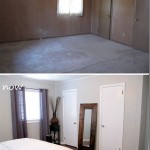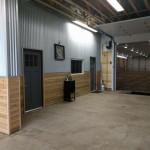What Is Traditional Interior Design Style?
Traditional interior design is a timeless and enduring style that reflects a sense of history, elegance, and comfort. It draws inspiration from 18th and 19th-century European aesthetics, emphasizing formality, symmetry, and a rich collection of decorative elements. This style values craftsmanship, quality materials, and a well-ordered arrangement of furniture and accessories to create a refined and inviting atmosphere.
The appeal of traditional interior design lies in its ability to evoke feelings of warmth, stability, and sophistication. It is a style that transcends fleeting trends, providing a comforting and familiar environment. While it may appear formal at first glance, traditional design can be adapted to suit individual preferences and lifestyles, making it a versatile choice for homeowners seeking a classic and enduring aesthetic.
Key Elements of Traditional Interior Design
Several defining characteristics contribute to the overall traditional interior design aesthetic. These elements work together to create a cohesive and harmonious space that exudes timeless elegance.
Symmetry and Balance: Symmetry is a cornerstone of traditional design. Rooms are typically arranged with a focus on balance, with furniture and accessories mirrored on either side of a central focal point, such as a fireplace or a large window. This creates a sense of order and visual harmony. For example, matching sofas flanking a fireplace or identical lamps placed on either end of a console table are common examples of symmetrical arrangement.
Rich Colors and Fabrics: The color palette in traditional interiors often leans towards warm and muted tones, such as creams, beiges, golds, and browns. Deep jewel tones like ruby red, emerald green, and sapphire blue are also frequently incorporated as accent colors, adding depth and richness to the space. Fabrics play a crucial role in defining the style, with luxurious materials like velvet, silk, damask, and brocade being commonly used for upholstery, drapery, and cushions. These fabrics often feature intricate patterns and textures that contribute to the overall opulence of the design.
Ornate Details and Embellishments: Traditional design is characterized by its attention to detail and the incorporation of ornate embellishments. Architectural details like crown molding, wainscoting, and intricate ceiling designs are hallmarks of the style. Furniture pieces often feature carved details, turned legs, and decorative hardware. Accessories such as antique mirrors, crystal chandeliers, and porcelain figurines further enhance the sense of elegance and refinement. These intricate details contribute to the overall visual richness and sophistication of the space.
Furniture in Traditional Interior Design
Furniture plays a central role in defining the traditional interior design style. The pieces are typically substantial, well-crafted, and designed to stand the test of time. Comfort and functionality are also important considerations, ensuring that the furniture is both aesthetically pleasing and practical for everyday use.
Classic Silhouettes: Traditional furniture often features classic silhouettes with graceful curves, elegant lines, and refined details. Pieces like Chesterfield sofas, wingback chairs, and ornate consoles are commonly incorporated into traditional interiors. These pieces are designed to exude sophistication and elegance, reflecting the craftsmanship and attention to detail that are characteristic of the style.
Quality Materials: The use of high-quality materials is paramount in traditional furniture. Solid wood, such as mahogany, cherry, and walnut, is frequently used for constructing frames and legs. Upholstery is typically made from luxurious fabrics like velvet, silk, and leather, ensuring both comfort and durability. The emphasis on quality materials ensures that the furniture pieces will last for generations and maintain their beauty over time.
Arrangement and Placement: The arrangement of furniture in a traditional interior is carefully considered to create a sense of balance and order. Pieces are often arranged symmetrically around a focal point, such as a fireplace or a large window. Conversation areas are thoughtfully created to encourage interaction and create a welcoming atmosphere. The overall arrangement is designed to be both functional and aesthetically pleasing, reflecting the principles of traditional design.
Color Palettes, Fabrics and Textures
The selection of colors, fabrics, and textures is crucial in creating the overall ambiance of a traditional interior. These elements work together to create a sense of warmth, richness, and sophistication.
Warm and Muted Colors: Traditional color palettes typically feature warm and muted tones, such as creams, beiges, golds, and browns. These colors create a sense of warmth and comfort, providing a backdrop for the other elements of the design. Accent colors, such as deep jewel tones like ruby red, emerald green, and sapphire blue, are often incorporated to add depth and richness to the space. The overall color scheme is designed to be harmonious and inviting, reflecting the timeless elegance of the style.
Luxurious Fabrics: Fabrics play a crucial role in defining the traditional interior design style. Luxurious materials like velvet, silk, damask, and brocade are commonly used for upholstery, drapery, and cushions. These fabrics often feature intricate patterns and textures that contribute to the overall opulence of the design. The use of high-quality fabrics ensures both comfort and durability, adding to the overall sense of luxury.
Layered Textures: Texture is an important element in traditional interiors, adding depth and visual interest to the space. Layering different textures, such as smooth silk, plush velvet, and woven wool, creates a sense of richness and complexity. Combining different textures also adds warmth and comfort to the space, making it more inviting and appealing. The skillful use of texture is a hallmark of traditional design, enhancing the overall aesthetic appeal.
Architectural Details and Accessories
Architectural details and accessories are essential components of traditional interior design, adding character, charm, and a sense of history to the space. These elements contribute to the overall visual richness and sophistication of the design.
Crown Molding and Wainscoting: Architectural details like crown molding, wainscoting, and intricate ceiling designs are hallmarks of traditional interiors. These details add visual interest and a sense of formality to the space. Crown molding, which is a decorative molding that runs along the top of the wall, adds a touch of elegance and refinement. Wainscoting, which is a decorative paneling that covers the lower portion of the wall, adds texture and visual interest. Intricate ceiling designs, such as coffered ceilings or decorative medallions, further enhance the architectural appeal of the space.
Antique Mirrors and Artwork: Antique mirrors and artwork are commonly used in traditional interiors to add character and a sense of history. Antique mirrors, with their ornate frames and aged glass, add a touch of elegance and reflect light throughout the space. Artwork, such as oil paintings, portraits, and landscapes, adds visual interest and reflects the personal tastes of the homeowner. The careful selection and placement of antique mirrors and artwork are essential in creating a cohesive and visually appealing traditional interior.
Decorative Accessories: Accessories play a crucial role in completing the traditional interior design aesthetic. Items such as crystal chandeliers, porcelain figurines, antique clocks, and decorative lamps add character and charm to the space. These accessories are carefully selected to complement the overall design and reflect the homeowner's personal style. The use of high-quality accessories adds a touch of luxury and refinement to the space, enhancing the overall sense of elegance.
In summary, Traditional Interior Design embraces symmetry, uses rich colors and fabrics, incorporates ornate details, favors classic silhouettes, and values quality materials. It uses warm colors for backgrounds with luxurious fabrics and layered textures. Finally, it focuses on architectural details with decorative accessories which ultimately define the style.

Traditional Interior Design Guide Julie Muo Home Gifts

Traditional Interior Design Defined And How To Master It Décor Aid

How To Quickly Update A Traditional Interior Design Home My Decorating Tips

Master The Traditional Style Interior Design

Traditional Interior Design Ideas For Your N Home Fabdiz

Traditional Interior Design 7 Best Tips To Create A Beautiful Room Decorilla

How To Transition Between Interior Design Styles On A Budget

2025 Top Interior Design Trends Designed

The Benefits And How To Of A Traditional Style Home Thomas Lloyd

10 Ways To Incorporate Original Art Into Your Home Decorilla Interior Design
Related Posts








